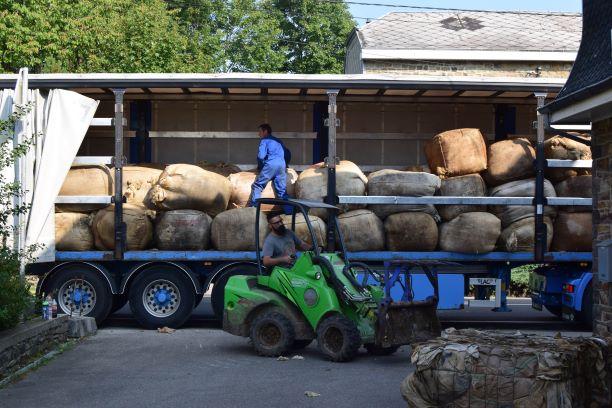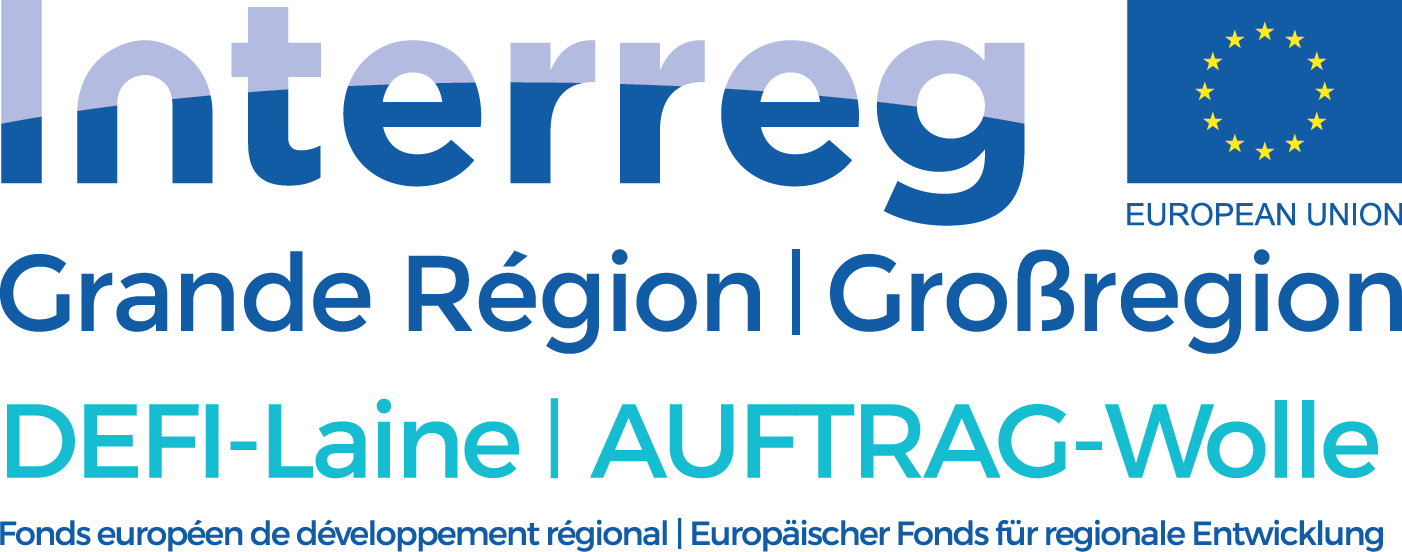Case Study
Challenge Wool
Contact name
Florent Mornard
Institution name
Nature Park Hautes-Fagnes Eifel
Region & country
Wallonia - Belgium, France, Luxembourg
Summary
The Nature Park Deux Ourthes is a partner of an Interreg DEFI-Laine project, a project coordinated by the Wool Sector, the objective of which is the creation of a sustainable sector for the local development of wool in the Greater Region. For this project, our Nature Park works mainly on two poles, communication through events for the general public and the creation of an innovative device for collecting and selling wool. In the territory of the Nature Park, we have identified 120 breeders, all of whom have nearly 2,000 sheep, which is equivalent to 5 tonnes of recoverable wool.

Loading wool at the storage location
Pierre-Emmanuel Gillard
Background of the project
Before the project, there were no outlets for the wool from sheep breeders in the territories of the Nature Park. The breeders did not know where to get their wool. For many of them, they either burned it or put it on their manure, thus losing all the added value of this beautiful material. Another problem found was that the general public was not familiar with the material “wool”, its transformation processes and its properties.
An efficient, accessible and close wool collection system had to be set up to enhance this deposit and meet the expectations of the breeders. There was also a need for more knowledge of the different qualities of wool for breeders so that they could better value their wool economically.
Solution and actions taken
We have set up a physical wool collection system. The breeders bring their wool there every month. The wool is weighed, evaluated and the breeders are paid within a month. We have installed boxes in the recyparks which allow breeders to use sacks to store wool and which inform them of the collection dates. We have also organized training in wool sorting so that breeders can sort their wool and get better compensation.
The measures put in place therefore concerned the identification of needs upstream, the organization of these with professional supervision in a collaborative approach with the breeders.
Other institutions or parties involved
Natagora, Alexis Lorraine, Celabor, Tourist Center Clervaux, Cluster Eco-construction, Agria Grand Est, EPL 54, the Filière Laine, Nature Park Hautes Fagnes-Eifel, Nature Park Deux-Ourthes, Nature Park Gaume, Regional Nature Park Lorraine.
Results
Thanks to INTERREG’s impetus, the partners were able to set up a project responding to the challenges of the territory on the socio-economic level by bringing added value to what was considered as waste. Now the project continues to operate on its own in partnership with the breeders.
Challenges
The main difficulty was finding a company that charged acceptable prices. There was indeed another company which held the monopoly and which therefore charged far too high prices. The launch of the project also took time because it was necessary to launch things.
Lessons learned
There is a need to show understanding with sheep farmers for whom wool is traditionally not an income but an expense. These same breeders are very busy, so you have to learn to adapt to their agendas and schedules. Wool is not an easy subject to discuss with the general public mainly because it is a forgotten material that has been replaced by a whole lot of synthetic materials.
Contact name
Florent Mornard
Institution name
Nature Park Hautes-Fagnes Eifel
Website(s)
